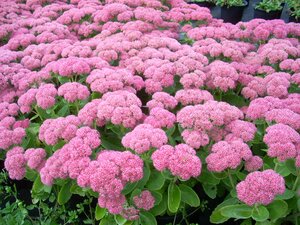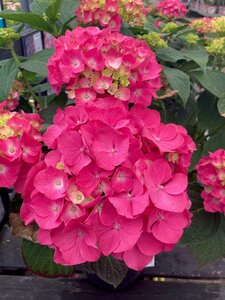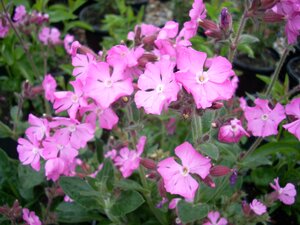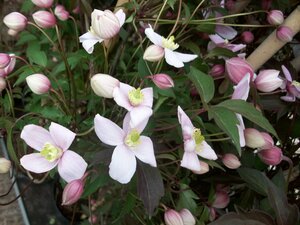Clematis Barbara Harrington
Why Buy Me?
- Large star shaped flowers
- Free flowering
- Easy to grow
Growing Conditions
Light:
Full sun to partial shade. Requires at least 6 hours of direct sunlight daily for optimal flowering. Tolerates light shade, but flower production may be reduced and stems may stretch in low light.
Soil:
Moist but well-drained, moderately fertile soil. Prefers neutral to slightly alkaline loam but tolerates a range of soil types. Avoid waterlogged or very heavy clay soils, which may encourage root problems.
Exposure:
Performs best in open, sunny borders or trained against walls, fences, or trellises. Benefits from its top in sun and base in shade—shade the roots with mulch or low-growing plants.
Drought Tolerance:
Moderate. Needs regular watering during dry spells, especially in its first few years. More tolerant of brief droughts once fully established but benefits from consistent moisture.
Cultivation & Care
Planting Time:
Plant in spring or autumn when soil is workable and not frozen. Autumn planting allows roots to establish before the next growing season.
Spacing:
Allow 1–1.5 m (3–5 ft) between plants or from other climbers to prevent overcrowding. Grows 2–3 m (6–10 ft) high, spreading with support.
Watering & Fertilization:
Water deeply during dry periods in the growing season, especially during flowering. Feed with a high-potash fertilizer in spring and again in midsummer to promote flowering. Avoid nitrogen-heavy feeds, which may encourage excessive leaf growth over flowers.
Mulching & Pruning:
Mulch in spring to retain moisture, regulate root temperature, and suppress weeds.
Pruning group 3: Cut back all stems to about 20–30 cm (8–12 in) above ground level in late winter or early spring (February or March). This encourages strong new flowering growth each season.
Propagation:
Propagate by layering or softwood cuttings in spring. Can also be grown from semi-ripe cuttings in summer. Named cultivars like ‘Barbara Harrington’ are best propagated vegetatively to maintain characteristics.
Seasonal Interest
Spring:
Fresh green foliage appears in early spring. Vines begin to climb actively by mid to late spring.
Summer:
Profuse display of vivid raspberry-red to deep pink flowers with dark stamens from mid-summer to early autumn (June to September). Blooms are semi-nodding and 7–9 cm across.
Autumn:
Flowering continues into early autumn. Foliage may take on golden tones before leaf fall.
Winter:
Deciduous. Bare stems in winter; plant remains dormant. Prune hard in late winter.
Wildlife & Garden Use
Wildlife:
Flowers attract bees and other pollinators. Dense foliage may provide seasonal cover for insects and small wildlife. Not typically noted for birds feeding on seed heads.
Garden Use:
Ideal for training up trellises, fences, obelisks, or climbing through shrubs and small trees. Excellent for cottage gardens, wildlife-friendly gardens, and vertical interest in mixed borders. Can also be grown in large containers with proper support.
Companion Plants:
Works well with climbing or shrubby roses, honeysuckle, or clematis with contrasting bloom times or colours. Pairs beautifully with perennials such as Campanula, Nepeta, Hardy Geraniums, Lavender, and Phlox. Complements cooler-toned flowers and silver-leaved plants.
Don’t miss out on the exceptional quality of the Clematis Barbara Harrington. It’s just a few clicks away when you order online, or you can stop by your nearest Thompson's Branch to pick one up and chat with our knowledgeable team.
-
EAN code9000029231
- Brand
- AspectSun or Partial Shade
- Flower Colourpink
- Foliage ColourGreen
- Width in ft9-10ft (270-300cm)
- Height in ft8-10ft (240-300 cm)
- Pot size2 litre pot
- Flowering PeriodJuly/September
Collect your Order from one of our sites!
Order and pay online and select the day you would like to collect your order from one of our four sites.
Local deliveries available, please order and pay online for delivery within 5 working days. See our terms & conditions.




